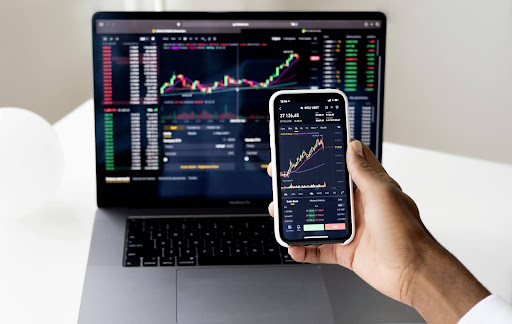Cryptocurrency contracts shape the future of digital finance, and multipliers take center stage in this transformation process. A multiplier within a crypto contract indicates how much one can magnify one’s investment or trading position. In other words, multipliers are tools used to expand potential returns but will stretch losses, as well.
In this article, I will discuss the role of multipliers, what they are, and their advantages and disadvantages.
What are Multipliers?
Multipliers in cryptocurrency are tools that allow traders to control larger positions with smaller amounts of money. They amplify both profit and loss based on the size of the multiplier. For example, using a multiplier of 10, any change in the cryptocurrency price will bring tenfold consequences for your investment. That is, a slight price movement can cause significant losses or gains.
Why are Multipliers Important?
The multiplier will give a great insight into how the cryptocurrency is being used. A high multiplier may indicate speculative heavy investment where several traders are gambling on price changes rather than transacting for real goods or services.
Multipliers also serve as a warning sign for potential market bubbles. When a particular coin is significantly higher in multiplier compared to the others, this means it is a speculation that drives its price rather than actual demand. This may be a red flag for investors, something that hints at an unstable market driven by hype rather than proper utility.
Price and Position Limits
Exchanges set daily limits on price movements in futures trading, known as “limit up” and “limit down.” These caps prevent extreme volatility. If hit, trading may pause or stop for the day. Position limits also restrict the number of contracts a trader can hold to maintain market stability.
Notional Value
The notional value of a futures contract is calculated by the price of the contract and the unit size. An S&P 500 futures contract worth $3,000 and a unit size of $50 computes to a notional value of $150,000. This is what helps derive hedge ratios, showing how much exposure to hedges e based on the levels of risk.
Minimum Price Fluctuation
The smallest price change possible in a contract is called a “tick”. For example, if the bitcoin futures contract has a $5 tick size and 5 bitcoins are the contract size, then the value of one tick will be $25. The tick value is a critical understanding of profit management, loss, and volatility.
Profit and Loss (P&L)
P&L is tick-size and tick-value dependent. For example, if bitcoin futures move from $26,000 to $30,000 with a $5 tick size and $25 tick value, the profit would be:
800 ticks × $25 = $20,000.
These concepts are crucial for risk management and maximization of return in crypto futures trading.
Choosing the Right Multiplier
1. Comfort with Risk
Know how much risk you’re willing to take. Higher multipliers can increase both potential gains and losses, so choose what matches your comfort level.
2. Market Cycle
Consider the market situation. Unstable markets may be better suited to lower multipliers to minimize risks, but stable markets can afford higher ones.
3. Time Horizon
Consider the holding time of your position. High multipliers would be preferred in shorter-term trades, while long-term investments require a more risk-averse approach.
4. Skill Level
Be truthful about your experience in trading. Beginners can start with smaller multipliers while experienced traders can handle more complex approaches.
Determine a multiplier that suits your trading goals and does not increase unnecessary risks by considering these factors.
Advantages of Multipliers
- Boosts profits: Multipliers can increase your earnings by amplifying small price changes.
- Lower investment needed: You can control a larger position with less upfront money.
- Supports trading strategies: Multipliers allow you to try different approaches like hedging or leveraging trends.
- Maximizes market moves: Even small market changes can create big opportunities with multipliers.
Disadvantages of Multipliers
- Incurs more risk: Losses escalate at the same pace as profits when using multipliers.
- Introduces volatility: Markets with multipliers tend to have sudden and unexpected changes.
- Requires precision: Mistakes can result in significant losses due to higher stakes.
- Overleveraging risk: A high multiplier may result in losing money beyond your initial amount.
Frequently Asked Questions (FAQs)
1. What is a multiplier in cryptocurrency contracts?
A multiplier enables traders to maximize the size of their investment or trading position without requiring a higher amount of initial investment. Multiplying magnifies both profits and losses.
2. Why are multipliers important in crypto trading?
Multipliers give insight into trends in the market. The more a multiplier is on the higher end, the more this often means speculative trading, while a low multiplier often reflects practical usage. They can also be warning signs of possible market bubbles.
3. What are the risks of using multipliers?
With increased risks come multipliers, such as higher volatilities, the possibility of overleveraging the transaction, and heavy losses in case the market moves against your position.
4. How do I choose the right multiplier for my trades?
You should consider factors like your risk tolerance, market conditions, trading timeframe, and experience level to pick the right multiplier.
5. Can beginners use multipliers in cryptocurrency trading?
Yes, but beginners should start with smaller multipliers to minimize risks and gain experience before moving to higher leverage.
Conclusion
Multipliers are also important in cryptocurrency trading, they are presented with the grip to expand profits and manage positions with relatively less capital. It comes with its risks, such as increased volatility, potential losses, and the risk of overleveraging. By carefully evaluating your objectives, ability, and market, you will be able to make smarter choices and minimize risk. While multipliers can be very powerful instruments, they do require caution, strategy, and a solid understanding of how they affect your trading results.





